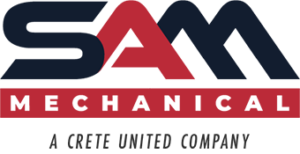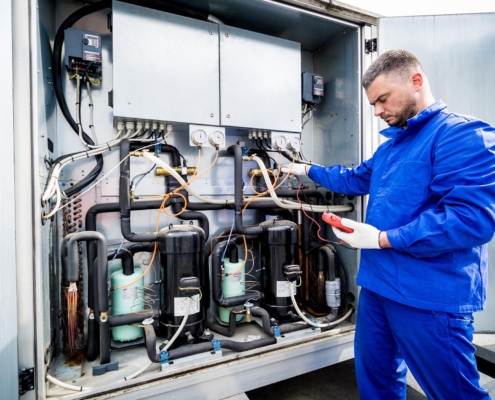 https://sammechanical.com/wp-content/uploads/2025/02/Worker-inspecting-commercial-HVAC-unit-on-roof.jpg
1250
2000
AbstraktMarketing
/wp-content/uploads/2024/01/sam-logo-crete-300x154.png
AbstraktMarketing2025-02-25 14:34:152025-02-25 14:34:23The Top Commercial HVAC Solutions for New Hampshire Businesses
https://sammechanical.com/wp-content/uploads/2025/02/Worker-inspecting-commercial-HVAC-unit-on-roof.jpg
1250
2000
AbstraktMarketing
/wp-content/uploads/2024/01/sam-logo-crete-300x154.png
AbstraktMarketing2025-02-25 14:34:152025-02-25 14:34:23The Top Commercial HVAC Solutions for New Hampshire BusinessesTroubleshooting Commercial HVAC Systems
Commercial HVAC (Heating, Ventilation, and Air Conditioning) systems play a crucial role in creating a comfortable and safe environment for various commercial settings like offices, retail stores, and public spaces. They not only maintain adequate temperature and air quality but also ensure optimal energy efficiency. However, like all machinery, HVAC systems are susceptible to issues that need immediate troubleshooting for continued efficiency. This comprehensive guide will explore the basics of troubleshooting commercial HVAC systems, common problems and their solutions, the importance of preventive maintenance, when and how to seek professional support, and more.
Understanding the Basics of Commercial HVAC Systems
The concept of HVAC (Heating, Ventilation, and Air Conditioning) systems circulates around controlling the environment of commercial spaces, ensuring a safe and comfortable atmosphere for both employees and the general public alike. Commercial HVAC systems comprise several intricate yet interconnected components working relentlessly to maintain optimal indoor temperature and air quality.
The Role of HVAC in Commercial Settings
Commercial HVAC systems hold a pivotal role in ensuring a suitable environment for work and business operations. By regulating indoor temperature and air quality, they significantly contribute to workforce productivity and customer satisfaction. HVAC units are responsible for providing fresh air, eliminating pollutants, controlling humidity, and maintaining the desired room temperature, thus, they have a substantial impact on the comfort and health of the building’s occupants.
Key Components: Filters, Condensate Drain, Compressors, and More
Filters: The air filters are a significant part of HVAC systems. They clean airborne particulates and pollutants, ensuring the circulated air is clean and healthy.
Condensate Drain: The conditioner removes humidity from the air, condensing it into water. The condensate drain effectively disposes of this water, preventing potential damage and bacterial growth within the system.
Compressors: The compressor of an HVAC system is its heart. It’s responsible for pumping refrigerant throughout the system, causing cooling or heating as required.
Other components include the heat exchanger, the evaporator and condenser coils, the thermostat, and the ductwork. While the heat exchanger performs the job of heating or cooling the incoming fresh air, the coils facilitate the exchange of heat through the aid of the refrigerant. The ductwork distributes treated air throughout the building.
Solve Airflow Issues With SAM
Reach out to the experts at SAM Mechanical today to find out how we can prevent and resolve any of your airflow problems.

Basics of Troubleshooting Commercial HVAC Systems
Troubleshooting commercial HVAC systems can be difficult. While most HVAC systems are brilliantly designed and pretty robust, they can encounter issues. However, understanding common commercial HVAC problems can help take timely corrective action, preventing potential system failures.
Preventing and Resolving Airflow Problems
Restricted airflow is a frequent problem with HVAC systems, often resulting from dirty filters, blocked ducts or vents, and fan issues. Regular maintenance and cleaning drastically reduce the occurrence of such issues. HVAC filters should be replaced every three months to ensure maximum air quality and unhindered airflow. In case of persistent issues, professional duct cleaning may be required.
Correcting Issues With Refrigerant and Compressor
A refrigerant leak or a malfunctioning compressor is another common issue in commercial HVAC systems. Leaks can lower refrigerant levels, impacting system efficiency and cooling ability. Similarly, a faltering compressor can lead to reduced cooling and eventual system failure. Any suspected leaks should be promptly repaired by a certified HVAC technician. Regular checks on the compressor can help identify potential issues early and ensure timely repairs.
Tackling System Failure Stemming From Faulty Thermostats and Ductwork
A faulty thermostat can disrupt the HVAC system’s operation, leading to inconsistent cooling or heating. Checking the thermostat’s settings and battery can resolve minor issues. However, in the case of persistent problems, replacement may be necessary. Poorly installed or damaged ductwork is another common source of system inefficiencies, leading to energy losses and uneven temperature distribution in the building. Professional repairs and regular inspection can help keep ductwork in an optimal state, ensuring efficient operation of the commercial HVAC system.
The Importance and Execution of Preventive Maintenance
The longevity and efficiency of commercial HVAC systems heavily rely on preventive maintenance, which minimizes downtime and reduces repair costs.
Regular Inspection and Cleaning for Improved Indoor Air Quality
Initiating effective maintenance steps meaningfully impact the indoor air quality, such as ensuring regular inspection and cleaning of the HVAC systems. Dirty air filters, clogged drain lines, or contaminated ductwork can drastically affect the air quality.
Here’s some expert advice to maintain air quality:
- Think of meticulously cleaning or changing air filters, vital components that trap contaminants from recirculating throughout your facility.
- Flushing the drain line prevents the development of algae or fungi which might clog the pipes and reduce the system’s efficiency.
- Professional duct cleaning eliminates accumulated dust and mold growth, thereby, enhancing air quality and system performance.
Attending these elements not only optimizes the indoor air but also boosts HVAC units’ efficiency and lifespan.
The Role of a Certified Technician in Troubleshooting Commercial HVAC Systems
Any intervention beyond general maintenance tasks should be handled by a certified HVAC technician. They possess the knowledge and tools to carry out complex troubleshooting HVAC services. Their expertise includes interpreting wiring diagrams, checking the primary power and control circuits, using diagnostic tools, and replacing parts. The technicians from Crawford Mechanical services are apt in troubleshooting commercial HVAC problems and ensuring that your system runs at peak efficiency.
Get Support From SAM Mechanical
While this guide provides a robust set of instructions for troubleshooting commercial HVAC systems, it’s critical to understand that executing a comprehensive diagnostic on commercial HVAC units requires a generous amount of specific experience and expertise. At times, simple corrective measures such as replacing air filters or mending drain line issues might be easily manageable. However, complex problems relating to compressor malfunctions, refrigerant leak, rooftop package unit-related issues, or restaurant hood systems can warrant the attention of a certified HVAC technician. Contact SAM Mechanical.
Share This Post
More Like This
 https://sammechanical.com/wp-content/uploads/2025/02/Worker-inspecting-commercial-HVAC-unit-on-roof.jpg
1250
2000
AbstraktMarketing
/wp-content/uploads/2024/01/sam-logo-crete-300x154.png
AbstraktMarketing2025-02-25 14:34:152025-02-25 14:34:23The Top Commercial HVAC Solutions for New Hampshire Businesses
https://sammechanical.com/wp-content/uploads/2025/02/Worker-inspecting-commercial-HVAC-unit-on-roof.jpg
1250
2000
AbstraktMarketing
/wp-content/uploads/2024/01/sam-logo-crete-300x154.png
AbstraktMarketing2025-02-25 14:34:152025-02-25 14:34:23The Top Commercial HVAC Solutions for New Hampshire Businesses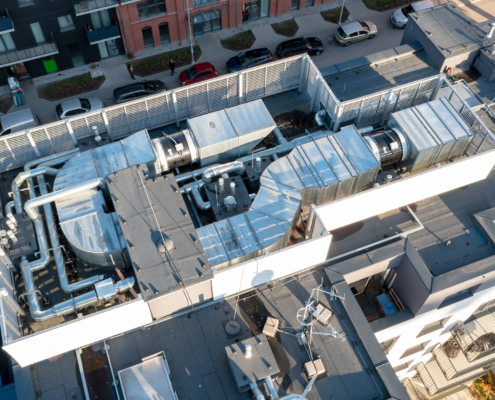
Why Regular Heating System Maintenance Is Critical for Commercial Operations
Commercial Heating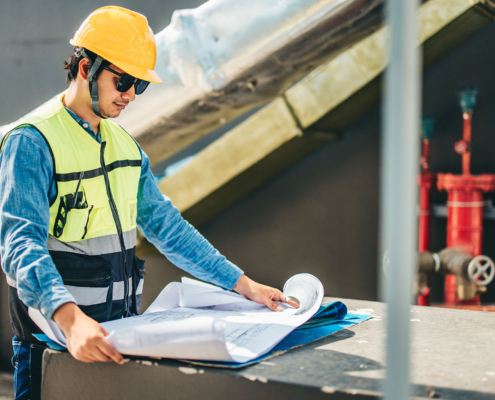
The Financial Benefits of a Commercial HVAC Upgrade
Commercial HVAC, Industrial HVAC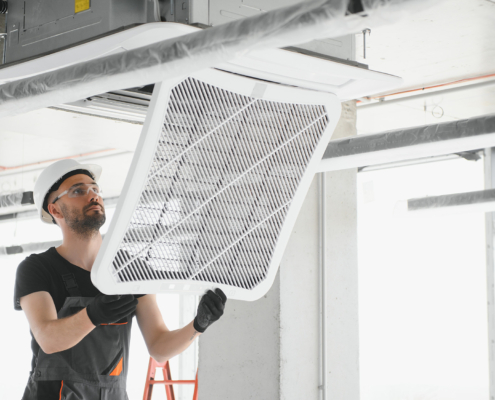
The Role of HVAC on Indoor Air Quality
Air Quality, Industrial HVAC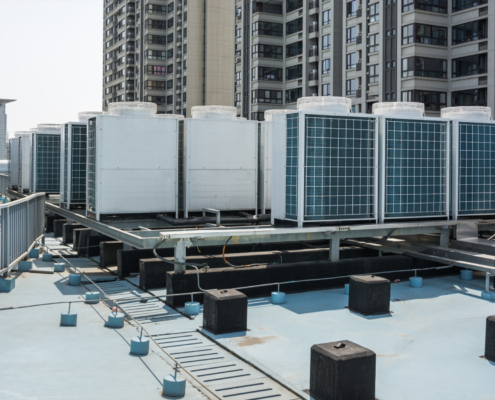
Uncovering the Benefits of Commercial HVAC Retrofits
Commercial HVAC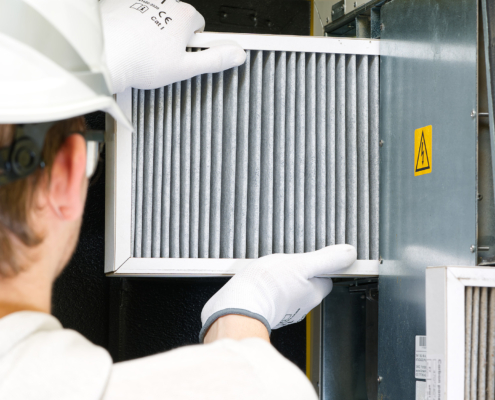
The Importance of Regular HVAC Filter Changes: What Everyone Should Know
Commercial HVAC, Residential HVAC
Uncovering the Innovative Role of Commercial Smart Thermostats
Commercial HVAC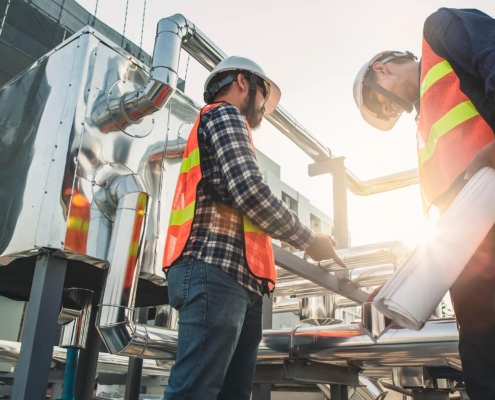
How Routine Commercial HVAC Maintenance Can Save Your Business Money
Commercial HVAC, Maintenance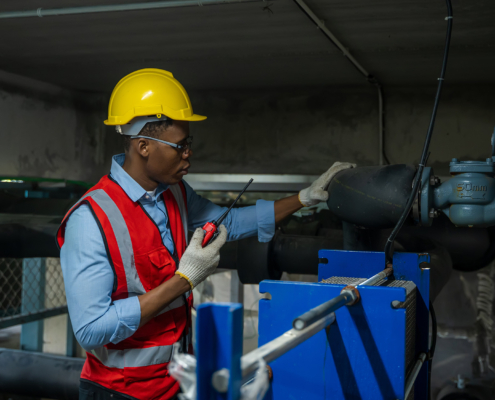
The Importance of Regular HVAC Inspections
Commercial HVAC, MaintenanceAbout
For over three decades SAM Mechanical has provided New Hampshire with the highest quality HVAC, plumbing, and mechanical services.
